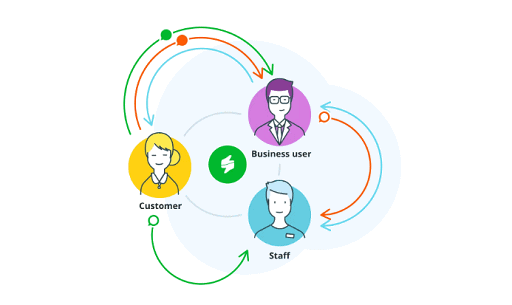In the age where customer experience is a major determinant of competitive advantage in business, the role of customer surveys is invaluable.
Customer Experience (CX) is directly linked to the way your customers view your brand and what they feel about their journey with you. With the help of a customer experience survey, you can effectively measure the level of success your business enjoys when it comes to interacting with customers. Customer surveys can not only help you gauge success but also reveal areas where you need to improve to enrich the overall customer experience.
So, what is a CX survey?
A customer experience survey is an essential tool used by customer experience consulting experts. It is basically a set of questions that help measure customer satisfaction and gather accurate and actionable insights.

CX surveys allow a company to accurately capture the emotions of individual customers depending on their experience at all the touchpoints they encounter throughout the customer journey. And by closely monitoring all that the customers have to say about your brand at each step, using a customer experience management platform.
Now, to gather the most relevant and vital insights about CX, the first and most important requirement is to design an efficient customer experience survey.
How do you design a customer experience survey?
An effective customer experience survey should be designed keeping in mind your target audience. The language, graphics, and examples included in it must resonate with the target consumer demographics. Once this is done, it is time to choose the right type of customer experience survey.
Choose the right type of CX survey for your business
There 3 approaches to curating customer surveys:
- Periodic satisfaction survey: This captures regular periodic snapshots of the customer experience through feedback gathered from targeted customer groups. The best example is an annual customer survey.
- Post-purchase survey: This survey is more like an evaluation of the overall experience of an individual consumer, right after they complete purchasing a product or service.
- Continuous satisfaction survey: This type of survey helps continuously monitor customer satisfaction. It is scheduled on a quarterly, monthly, or daily basis and focuses on the post-purchase evaluation throughout the customer’s lifecycle.
Identify the main drivers at each touchpoint
Creating a customer journey map is the best way to spot every touchpoint. This will help you understand what you are assessing and where. Thereby, you can spot the core drivers of CX and understand their impact on specific business metrics like customer lifetime value, revenue, customer churn, etc.
Include the right questions in the survey
Asking the right questions is the most obvious yet the most important part of designing a CX survey. You need to first understand what you want to know and form questions in that direction. For instance, do you want to gauge customer loyalty, or do you intend to measure customer satisfaction?
If you think that you already know the answer to a question, you might not want to include it in the survey, because, time is precious. And asking unrelated or impertinent questions is a waste of time for the survey respondents. You don’t want that.
Select the appropriate channel
You need to design your survey and launch it where it receives maximum focus and has the maximum impact. It should also be easy to access. Choose a channel or platform to post your customer surveys and keep it concise.
Allow open-text feedback
Make sure to keep spaces where customers can write open-text feedback. Textual feedback helps gather insights that closed-ended questions cannot offer. Using text analytics software here simplifies the analysis of hundreds of such responses to extract accurate understandings.
Adhere to best practices
Respondents who answer neutrally or agree with everything can distort the accumulated data. Following these CX survey best practices can prevent such responses from skewing customer data:
- Keep the survey concise with a maximum of 10 questions
- Use clear, unbiased, and direct language—no jargon
- Use no leading questions
- Thoroughly test and review the survey before publishing
Final words
A CX survey should contain a mix of both open-ended and close-ended questions. Structured data derived from the answers to these questions, along with suggestions put forward by customers, help define the overall experience of a customer.
And remember, never keep any “mandatory” questions; compulsion quickly leads to respondents losing interest. And make sure to design the CX survey for mobile devices and laptops, to make it maximum convenient for your respondents.
Would you like to read more about how to design customer experience survey-related articles? If so, we invite you to take a look at our other tech topics before you leave!
![]()












